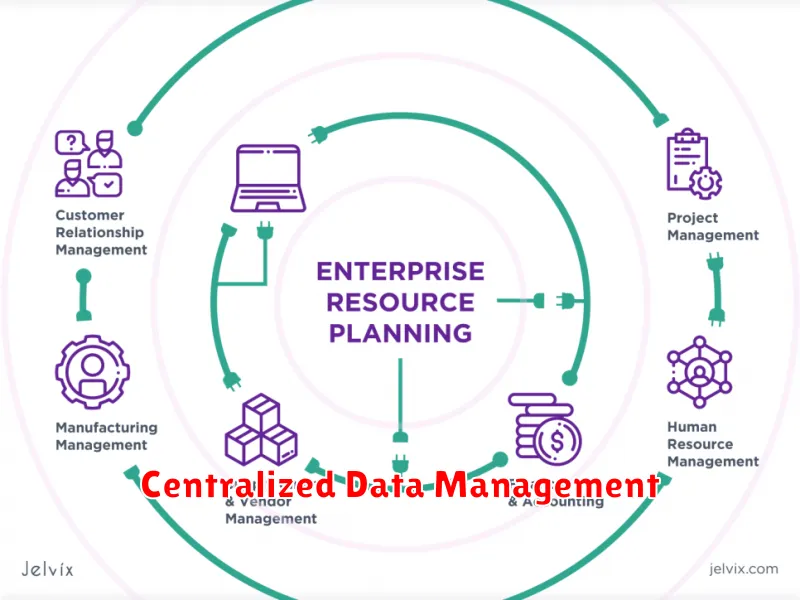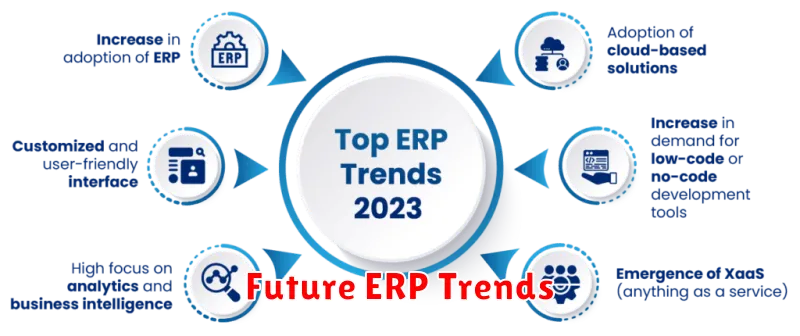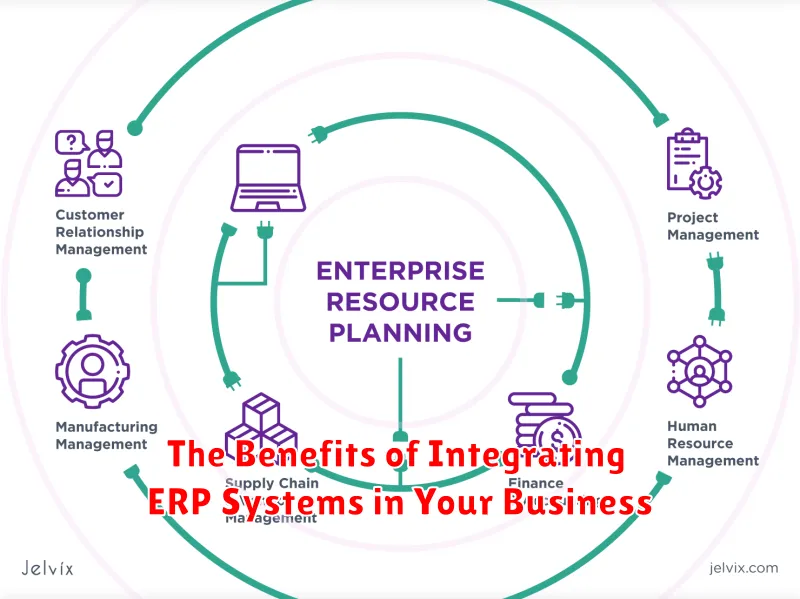In today’s competitive business landscape, achieving operational efficiency and maximizing profitability are paramount. Integrating an Enterprise Resource Planning (ERP) system can be a game-changer for businesses of all sizes. An ERP system offers a centralized platform to manage and streamline core business processes, providing real-time visibility into critical data across departments. This allows for informed decision-making, improved collaboration, and enhanced productivity. From finance and human resources to supply chain management and customer relationship management, an ERP system integrates all facets of your business, fostering growth and sustainable success. Understanding the benefits of ERP integration is crucial for businesses looking to optimize their operations and gain a competitive edge.
This article explores the numerous advantages of integrating an ERP system into your business. We will delve into the key benefits of ERP systems, including reduced operational costs, improved efficiency, enhanced data accuracy, and better customer relationship management. Whether you are a small startup or a large enterprise, implementing an ERP system can be a transformative step towards achieving your business objectives. Discover how ERP integration can empower your organization to thrive in the dynamic global market.
What Is an ERP System?
An ERP (Enterprise Resource Planning) system is a comprehensive software solution designed to manage and integrate core business processes. It provides a centralized system for various departments, including finance, HR, supply chain, and customer relationship management, to access and share information in real-time.
By streamlining these processes, ERP systems aim to improve efficiency, reduce operational costs, and enhance decision-making. They achieve this through automation, data analysis, and improved collaboration across the organization.
Streamlining Business Processes
A primary advantage of integrating an ERP system is the streamlining of core business processes. By consolidating data and operations onto a single platform, ERP eliminates data silos and redundancies. This leads to improved efficiency and productivity across various departments.
Automated workflows replace manual tasks, reducing errors and freeing up employees to focus on higher-value activities. Information flows seamlessly between departments, fostering better communication and collaboration. Real-time data visibility empowers informed decision-making and allows for proactive adjustments to optimize processes.
Centralized Data Management

A core advantage of ERP integration is the centralization of data. Instead of data residing in disparate silos across various departments, an ERP system brings it all together into a single, unified database.
This centralized approach offers several key benefits. It eliminates data redundancy, ensuring data consistency and accuracy across the organization. It also provides a single source of truth, allowing for real-time visibility into business operations and facilitating better decision-making.
Improving Financial Management
Integrating an ERP system offers significant advantages for financial management. It provides a centralized platform to manage all financial processes, leading to improved accuracy and efficiency.
Key benefits include real-time reporting, which empowers businesses to make informed decisions quickly. Automated processes reduce manual data entry, minimizing errors and freeing up valuable time for strategic planning.
Streamlined reconciliation simplifies accounting procedures, improving compliance and reducing audit risks. Furthermore, an ERP system allows for better budgeting and forecasting by providing a comprehensive overview of financial data.
Enhanced Supply Chain Efficiency
Integrating an ERP system offers significant improvements to supply chain operations. By centralizing data, businesses gain real-time visibility into inventory levels, order status, and delivery schedules. This enhanced transparency allows for proactive management of the entire supply chain, from procurement to delivery.
ERP systems facilitate streamlined communication between different departments and external partners, reducing delays and errors. Automated workflows further optimize processes, such as order fulfillment and inventory replenishment, leading to increased efficiency and reduced operational costs.
Choosing the Right ERP Software
Selecting the right ERP system is a critical decision for any business. A mismatched system can hinder operations and waste resources. Consider these key factors:
Business Needs: Carefully analyze your current processes and future goals. Identify pain points and areas for improvement. An ERP system should address these specific needs.
Scalability: Choose a system that can grow with your business. Consider factors like anticipated user numbers, transaction volume, and future expansion plans.
Budget: Establish a realistic budget for implementation and ongoing maintenance. Factor in costs for software licenses, customization, training, and support.
Vendor Reputation: Research potential vendors thoroughly. Consider their experience, track record, and customer support capabilities. Look for vendors with a strong reputation in your industry.
Common ERP Implementation Challenges
Implementing an ERP system, while beneficial, is not without its hurdles. Data migration can be complex and time-consuming, requiring meticulous planning and execution to avoid data loss or corruption. Customization to fit specific business processes can add to the project’s complexity and cost. User adoption is another key challenge, as employees must be adequately trained to effectively utilize the new system.
Integration with existing systems can also pose significant technical challenges. Furthermore, accurately estimating the project’s timeline and budget is crucial, as underestimation can lead to cost overruns and delays. Lastly, change management is essential to address resistance and ensure smooth transition across the organization.
ROI and Cost Considerations
Implementing an Enterprise Resource Planning (ERP) system requires careful consideration of both the return on investment (ROI) and the overall costs involved. While ERP systems offer substantial benefits, they represent a significant investment.
Calculating ROI can be complex, encompassing both tangible benefits like reduced operational costs and intangible benefits such as improved decision-making. Direct costs include software licensing, implementation, and hardware. Indirect costs include training, data migration, and potential productivity disruption during the transition.
A thorough cost-benefit analysis is essential to determine the feasibility and potential ROI of an ERP implementation. This analysis should project both short-term and long-term costs and benefits, allowing businesses to make informed decisions aligned with their strategic goals.
Training Employees on ERP Systems
Effective training is crucial for successful ERP implementation. Employees need to understand the system’s functionalities and how it impacts their daily tasks.
A comprehensive training program should cover the following:
- Basic navigation and data entry: Ensuring employees can easily use the system’s interface.
- Specific module training: Focusing on the modules relevant to each department or role.
- Reporting and analytics: Teaching employees how to generate reports and analyze data.
- Troubleshooting and support: Providing resources and support for addressing technical issues.
Ongoing support and refresher courses are essential to reinforce learning and address evolving needs.
Future ERP Trends

The ERP landscape is constantly evolving. Cloud-based solutions continue to gain traction, offering scalability and flexibility. Mobile ERP is also becoming increasingly important, enabling real-time access to data from anywhere.
Artificial intelligence (AI) and machine learning (ML) are poised to revolutionize ERP, automating tasks and providing predictive analytics for improved decision-making. Blockchain technology offers potential for enhanced security and transparency within supply chains.
Two-tier ERP is gaining popularity, allowing businesses to maintain a central ERP system while utilizing smaller, specialized systems for specific departments or subsidiaries.

